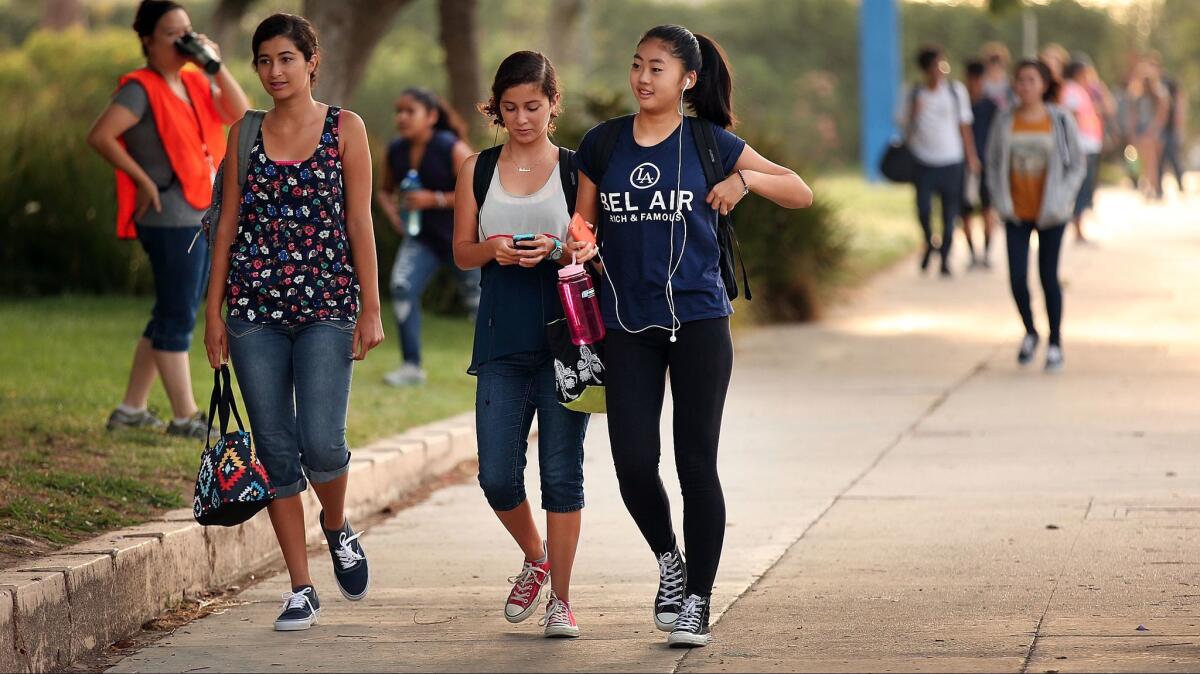Students feel safer in more diverse schools, study finds

- Share via
California sixth-graders who attend racially diverse schools feel safer, less lonely and less picked on than their peers at more homogenous schools, according to a new study out of UCLA.
But it’s not enough for diversity to exist on campus, according to the study, published in the journal Child Development.
In some schools where the overall student population was diverse, students’ classes did not reflect the school as a whole. In those schools, students of all races had less confidence that teachers treat everyone fairly, and were less likely to say they would eat lunch, dance with, sit on the bus next to or visit the home of someone of a different race.
“When kids have less racial exposure in their classes than the diversity in the school … they’re less likely to cross that racial boundary,” said UCLA education professor Sandra Graham, the study’s co-author.
The study is based on surveys from about 4,300 sixth-grade students in public urban schools in Northern and Southern California, including some in L.A. Unified. A “diverse” school is defined as one that has a relatively equal number of students in each of several racial groups. That student body makeup may create a balance of power, the study suggests.
“In a state like California, the population’s becoming a lot more racially and ethnically diverse,” Graham said. “All kids are going to have to learn to live in a diverse world. … So the schools have an important role to play.”
Other studies have examined the effects of diversity on academic achievement. But focusing on the emotional effects on children is important because their state of mind affects their ability to learn, the study’s authors say.
Environments where a student feels vulnerable “are not the ideal circumstances to learn,” said study co-author and UCLA psychology professor Jaana Juvonen. “If you’re afraid in school, you’re not even going to raise your hand in class.”
It’s especially important that schools try to make sure their students from different backgrounds interact with one another, Graham said. Though the study did not uncover the reasons for segregation within a diverse school, policies that separate students based on perceived ability tend to isolate black and Latino students from white and Asian ones, and extracurricular activities also often break along racial lines, Graham said.
The study focused on students who identified as white, Asian, black or Latino — subsequent ones will pay more attention to the experiences of multiracial students, Juvonen said.
Reach Sonali Kohli at Sonali.Kohli@latimes.com or on Twitter @Sonali_Kohli.
ALSO
Do charters or traditional schools have it worse? A new study says both
L.A. Unified approves more spending and layoffs
La Cañada High will try letting teens sleep in a bit
Most private colleges take very few transfers. At USC, about 1,500 get a spot each year
More to Read
Sign up for Essential California
The most important California stories and recommendations in your inbox every morning.
You may occasionally receive promotional content from the Los Angeles Times.














